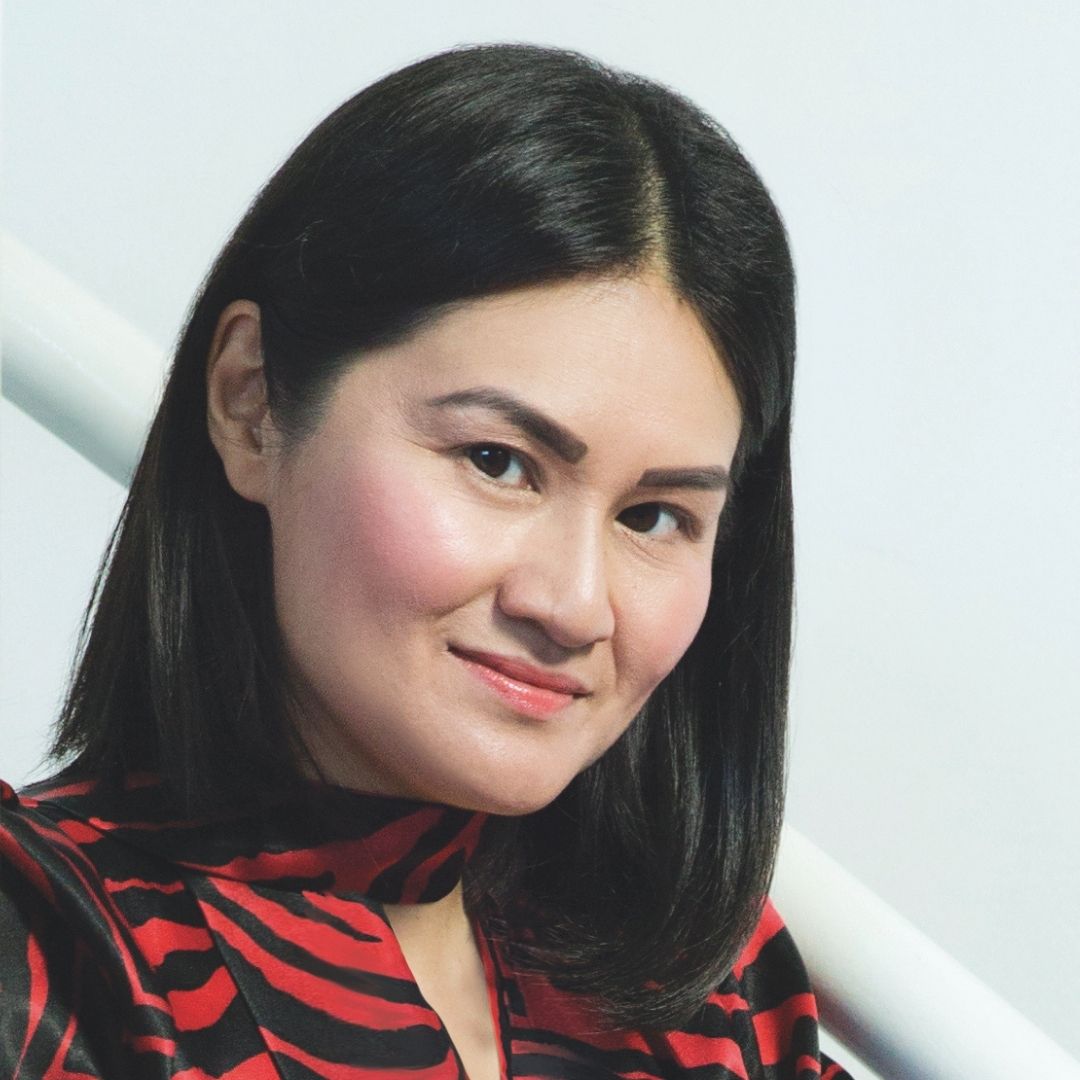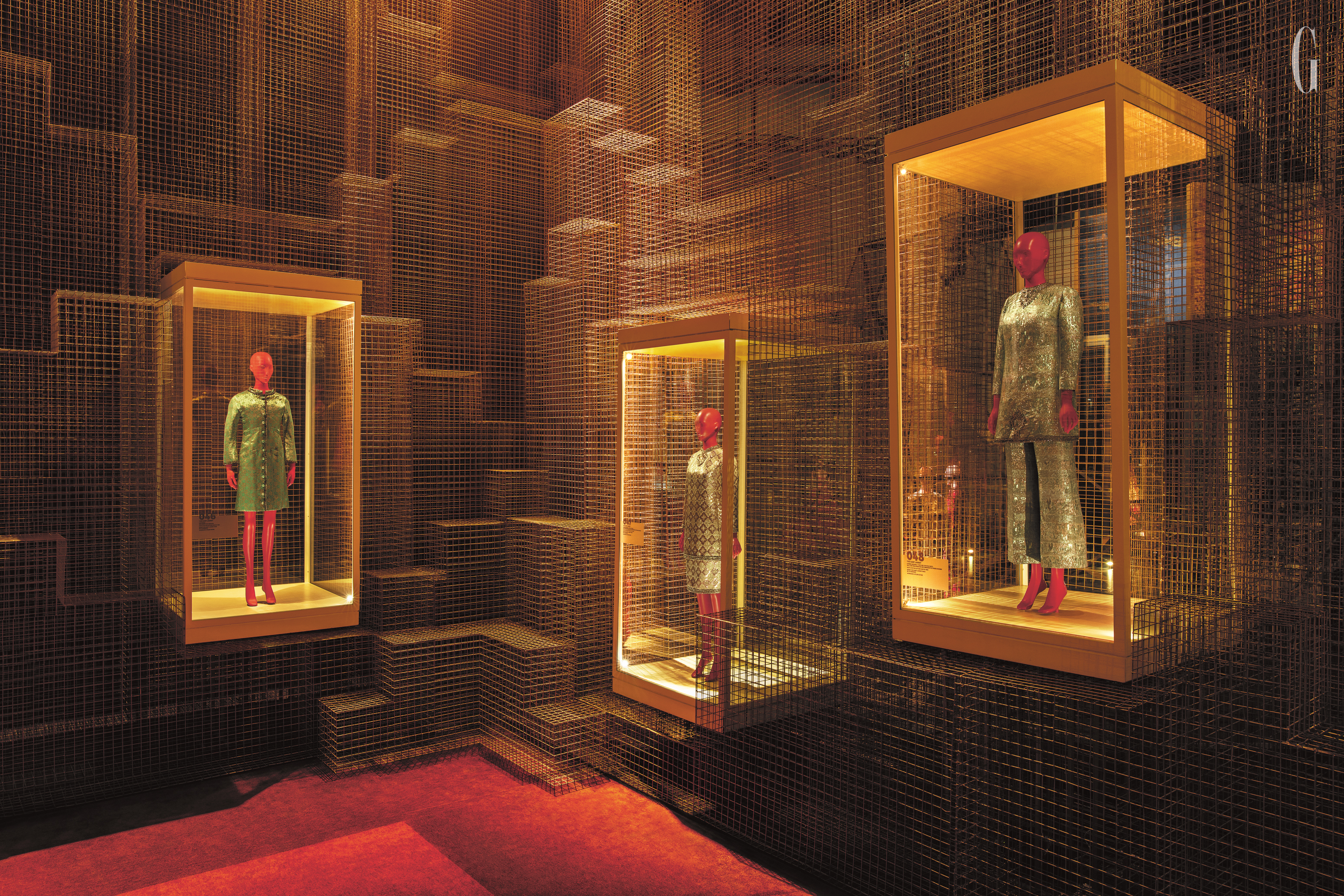
The world watched in collective awe and wonder as Maria Grazia Chiuri debuted Dior Fall/Winter 2023 on a marigold-strewn runway at the Gateway of India. The 99-look collection – a show of gratitude to the unsung Indian artisans and artistry of Mumbai’s Chanakya ateliers and the Chanakya School of Craft for their priceless contribution to the legacy of Dior – drew gasps and guests such as superstars Sonam Kapoor, Freida Pinto, and Rekha, in equal measure.
However, what many didn’t realise was that the Dior fashtravaganza served as the warm-up act, soon to be dwarfed the next day by a far more colourful and significant cultural moment which pledges to have a more profound impact on India for generations to come.
With all eyes on Mumbai, the stage was set for the inauguration of the Nita Mukesh Ambani Cultural Centre, India’s first multidisciplinary space for arts and culture on 31 March 2023 taking place over a three-day celebration of performance, the visual arts, India’s influence on global fashion and above all, national pride.
The three-storey building houses three performing arts spaces, The Grand Theatre, The Studio Theatre and The Cube, and a four-storey gallery called The Art House, a platform for Indian and global talents. Nita Mukesh Ambani herself – after whom the NMACC takes its name – calls it “our humble dedication to new India.” The classical dancer turned philanthropist and long-time patron of the arts, and beloved wife of business mogul and multibillionaire Mukesh Ambani, admitted, “For Mukesh and me, the NMACC is a dream come true.”
Declaring her eponymous cultural centre officially open, she reflected, “For a long time, we had nurtured a dream that India should have a world-class cultural centre. We were keen to create a space for promoting and celebrating our artistic and cultural heritage in cinema and music, in dance and drama, in literature and folklore, in arts and crafts, in science and spirituality, all of which are India’s intangible national wealth. Culture weaves the threads of mutual understanding, tolerance, and respect that knit communities and countries together. Culture brings hope and happiness to humanity. Therefore, as an artist, I hope this centre becomes a space that celebrates the arts, the artists, and the audience. A space where our people can feel proud of their heritage.”
The Honorary Trustee on the Board of the Metropolitan Museum of Art in New York and founder of the NMACC continued, “We envisioned the centre to become home not only to the finest talent from Indian cities, but also from our small towns and remotest villages. I truly hope this space continues to inspire and empower our future generations. For as long as we have the stage, we have a voice. And as long as we have a voice, we have the power to tell our stories – stories to shape our history, stories to create a new tryst with destiny and stories to change the world for the better.”
It’s an audacious promise, but the stellar performances, blockbuster exhibitions, and international curatorial partnerships in the three days that followed proved it’s also a tangible reality. Any one of these shows alone would have been enough to put Mumbai on the map as a new cultural destination but the potent combination of all three in dizzying succession left little doubt about the power and potential of this moment.
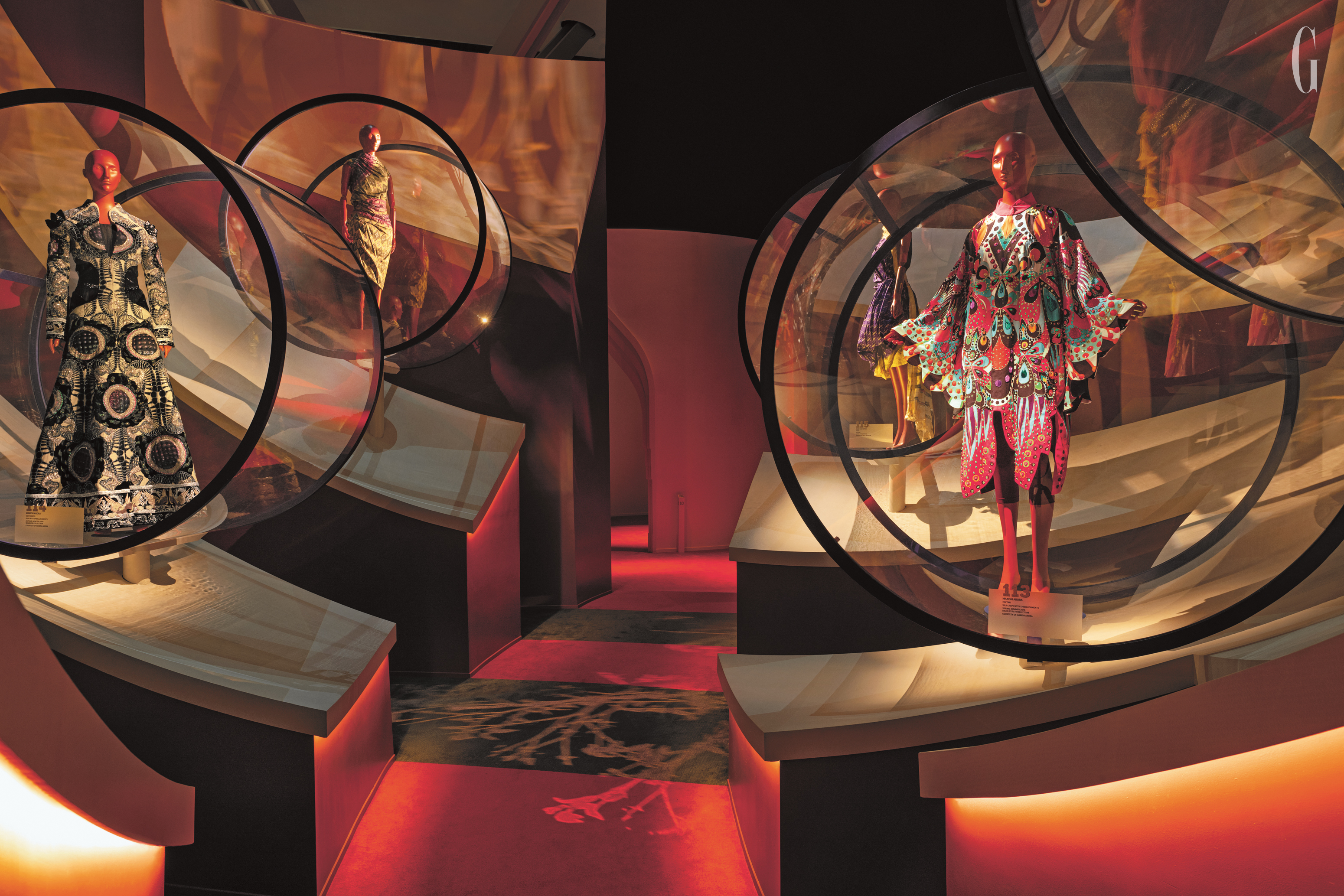
THE GRAND THEATRE
As the sun sets on a perfect spring day in Mumbai, it bathes the NMACC in a golden glow. The city’s Bandra Kurla Complex in India’s financial and entertainment capital is alive as guests from the worlds of Hollywood, Bollywood, luxury fashion, and contemporary art, come together for the first glimpse of Nita Mukesh Ambani’s cultural icon in action.
We’re gathered for the launch of The Grand Theatre – a 2,000-seater auditorium adorned with 8,400 Swarovski crystals – with a specially commissioned celebration of performing arts, dance, drama, and music fi t for the occasion. The Great Indian Musical: Civilization to Nation directed by Feroz Abbas Khan, is a stage production, decadently designed to be performed for one night only, featuring over 350 artists, a 55-piece live orchestra, 1,100 costumes by Indian couturier Manish Malhotra, and a surprise cameo from Nita Mukesh Ambani herself.
“Once in a lifetime, comes only once in a lifetime. And today, is that time for us,” reveals Nita’s daughter Isha Ambani, speaking on behalf of her family as the curtain rose. “Welcome to what we hope will become India’s fi nest platform to present our culture in all its diversity and depth. A home to art and culture in all its forms, from the visual arts to the performing arts, from musical fountains to musical theatricals, from costume to canvas, from fashion to food, from conventions to celebrations, all under one roof.”
Isha admits, “Bringing the centre to life has been an absolute labour of love and joy. It’s named after my mother, and the NMACC is a tribute to her lifelong devotion to the arts. As a trained classical dancer, the stage has always been my mother’s temple. But her love for the arts has transcended beyond medium or form.” And in a hint of what’s to come, she adds, “Over the years, I’ve seen her dedicate herself to reviving, preserving, and promoting traditional Indian arts and crafts. The Nita Mukesh Ambani Cultural Centre is the embodiment of her vision. At this centre, we hope to showcase the best of India to the world and bring the best of the world to our home, India.”
Film and theatre director Feroz Abbas Khan was tasked with the epic responsibility of telling the story of the heritage and coming of age of India, from the birth of a multi-ethnic, multi-faith society, via British colonial rule to its eventual independence, and the signing of the Constitution through the medium of a musical. Casting Nita Mukesh Ambani as a featured classical dancer mourning the assassination, and giving thanks for the life of Mahatma Gandhi and his contribution to freedom was not only a masterstroke of directorial brilliance, but also the culmination of 42-year creative connection. “She used to be part of my theatre company,” Feroz remembers wistfully. “She was a stunner of a dancer in college. She was a showstopper. So I thought that it would be very appropriate that the tribute to Gandhi should be given by her. I felt that nothing would be better.” His instincts paid off and Civilization to Nation – originally conceived as a one-off performance – returned to the stage night after night by popular demand, with the NMACC founder reprising her mesmerising role.
Now in an advisory role at NMACC, Feroz Abbas Khan sees this 42-year collaboration coming full circle, and has plans to democratise the arts in India. In addition to the state-of-the-art auditorium, the NMACC boasts a 200-seat space for cutting-edge performances called The Studio Theatre, plus The Cube, an intimate 100-seat incubator for promoting emerging talent and experimental practices.
“That’s where my heart belongs, and where I’ve spent most of my life. And to me, they are very important,” he confesses of these grassroots initiatives. “That’s going to be your place,” he announces as a call-out to the aspiring Indian directors of the future. “You have the idea, we have the platform and the finest technical infrastructure that you can find anywhere in the world. And those spaces, to me, are extremely sacred.” As well as funding and facilities for creatives, with affordable ticket pricing, and programming that aims “to nurture new talent and give a platform to some of the fi nest performances in music, dance, and theatre,” the NMACC is making the experience more inclusive for audiences, too.
As for Nita’s husband Mukesh Ambani, Chairman and Managing Director of Reliance Industries, his ambition is even greater. “This arts and cultural centre that Nita has gifted not only to the city of Mumbai but to India really marks India’s coming of age in the new era. We now have the infrastructure to produce world-class entertainment, and to invite the rest of the world to come to Mumbai,” he observes. “I hope that one day, we have original shows produced by Indians and Mumbaites here and we take a show from here to Broadway. That is our wish.” Global domination awaits.
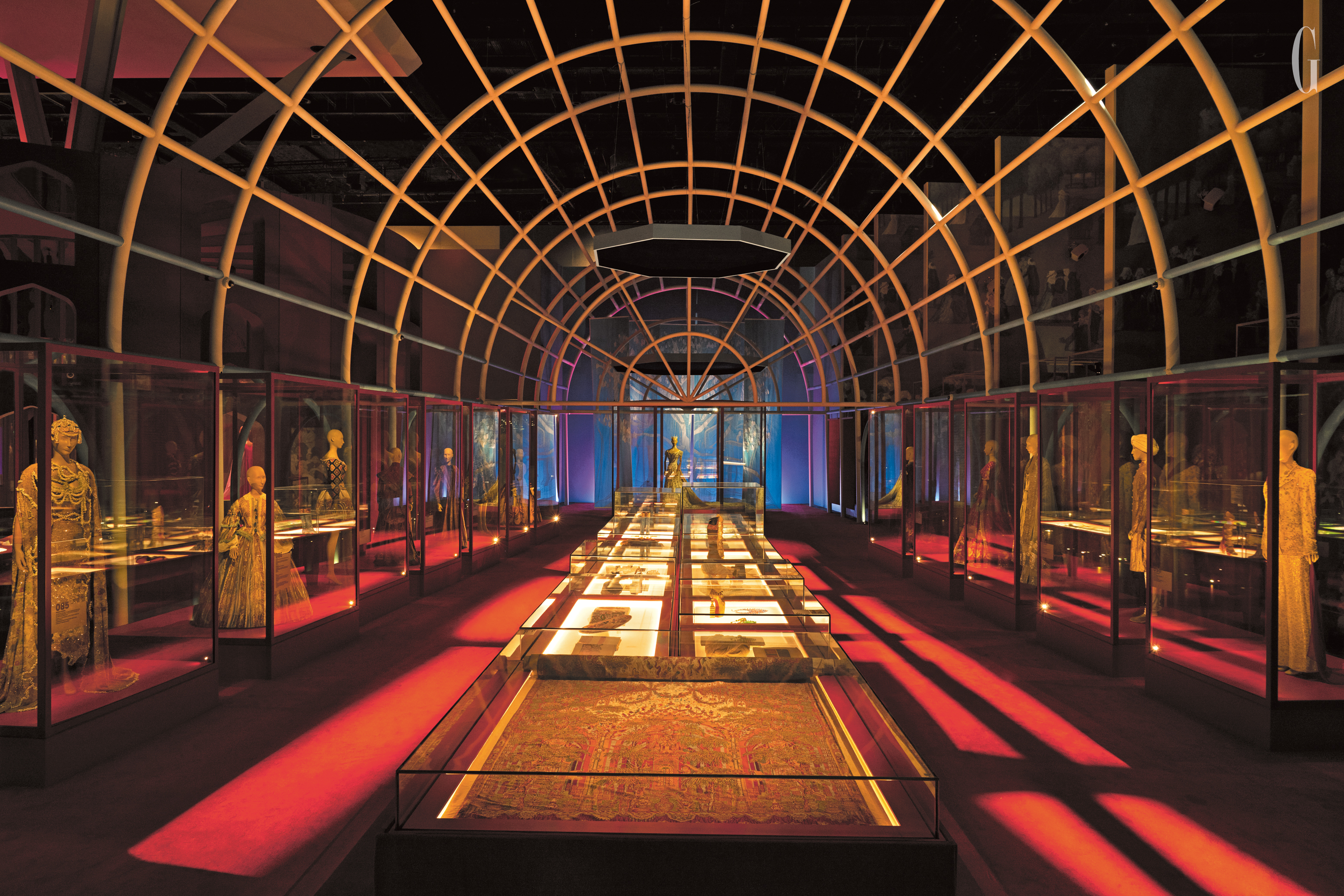
INDIA IN FASHION
The dress code said “India-inspired”, the mood board featured the Chanel Métiers d’Art Paris-Bombay collection, and the guest list read like the Fashion Week show schedule thanks to Maria Grazia Chiuri, Christian Louboutin, Prabal Gurung, Zandra Rhodes, Giambattista Valli, Lucia Silvestri and Margherita Missoni among many others in attendance. Amid the swirls of a lehenga, the glimmers of embellishment, and the flutters of a dupatta, came the opening of India in Fashion: The Impact of Indian Dress and Textiles on the Fashionable Imagination, an extraordinary exhibition curated by Hamish Bowles and designed by Patrick Kinmonth and Rooshad Shroff.
“Be it fabric, motif, or drape, the Indian design aesthetic has influenced fashion across the globe,” muses Nita Mukesh Ambani on what motivated her to pay this tribute to her homeland. “From time immemorial, the craft of the Indian artisan has been integral and irreplaceable. So, when the team and I were conceptualising the show, we were excited about the opportunity to showcase and celebrate this global influence of Indian arts and crafts. We wanted to bring forth the idea of ‘Made in India’, and not just in terms of manufacturing – but also the imagination and artistry that it continues to inspire.”
Isha Ambani elaborates, “When my mother and I, along with Hamish and our teams, were conceptualising this exhibition, we were clear in our vision that it had to encompass and showcase the wide-reaching influence of Indian fashion. It had to be an exhibition that touched upon the historical influence of India, and its sartorial legacy. But also one that brought back to the current moment, one of Indian pride. A moment where our designers are finally and rightfully showcasing, in fashion capitals across the world. A moment where important conversations about Indian craftsmanship and its traditions are being had, both at home and abroad. And a moment where our impact on the clothes you see on global runways is finally being recognised.”
India in Fashion: The Impact of Indian Dress and Textiles on the Fashionable Imagination takes visitors on an immersive odyssey through 10 experiential zones devoted to Bollywood, chintz, the sari, European luxury houses, Indian designers, and more, via 190 astonishing looks from 130 international designers sourced from 14 museums in seven countries and six Indian cities across 40,000 spellbinding square feet. Just ask Zendaya. “It was unreal! So, so gorgeous,” exclaims the actress. “Every time I turned a corner it took my breath away.” Among the participating Maisons are: Chanel, Dior, YSL, Alexander McQueen, Valentino, Zandra Rhodes, Manish Arora, Manish Malhotra, Sabyasachi, Abu Jani and Rahul Mishra.
Exhibition designer Patrick Kinmonth chuckles, “It’s a surreal experience having an opening where the people who are walking past the exhibits are as fascinatingly and beautifully dressed.” With Gigi Hadid in a chikankari sari by Abu Jani Sandeep Khosla, and Zendaya draped in Rahul Mishra’s hand-embroidered Verdure sari gown and Flying Cranes bralette, this is no exaggeration. He recalls, “I met more than 20 of these amazing creatures, and many of them said, ‘This just makes me feel fantastically proud of being Indian.’ That’s a marvellous feeling to suggest that this power that lies in the heritage of this tremendous tradition of decoration, and embellishment and manufacture should inform how they feel about their identity. It’s a wonderful achievement.”
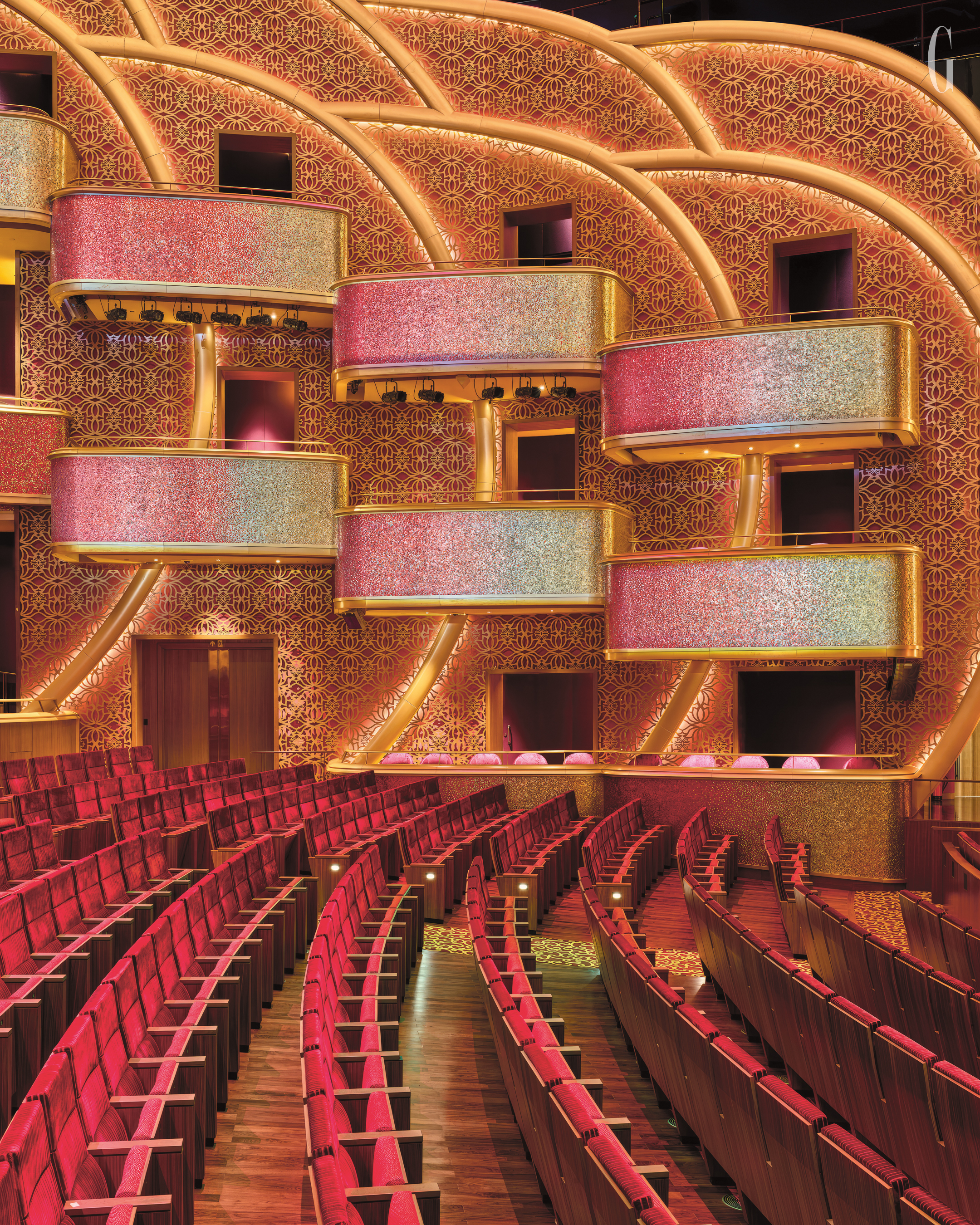
Glittering guests gracing the NMACC pink carpet – and the Bollywood gala until the early hours – also included Penélope Cruz, Shah Rukh Khan, Priyanka Chopra Jonas, Nick Jonas, Tom Holland, Jeff Koons, Karlie Kloss, Law Roach, Deepika Padukone, Salman Khan, Alia Bhatt, Aishwarya Rai, Rahul Mishra, Manish Malhotra, Abu Jani and Sandeep Khosla.
According to Patrick, the jewel of the partnership with the NMACC is that, “You have a patron who, in a marvellous way, can just appear on the stage dancing with everybody else.” On their dynamic throughout the planning process, he shares, “Having her as a sounding board for what we’ve done is completely amazing, because she just totally understands and responds. When we were sometimes wondering exactly which direction to go in, we could actually ask her directly, but most of the time, you had this tremendous sense of a beautiful hand on the back, saying, ‘This needs to be incredible and I’m going to give you what you need to make that happen’. I can’t wait to see what happens here but I know that the support for anybody who comes here is going to be absolutely at the top.”
By presenting a curation rather than a collection, the NMACC is challenging the norms of institutionalised arts and culture, and amid the ongoing decolonising the museums debate, it couldn’t come at a better time. Patrick notes, “I was reflecting on how London, and Berlin, and Paris, are full of loot. You have to have a museum, because where are you going to put all this stuff? The V&A has thousands of warehouses all crammed with things which have all been dragged out of cultures from all over the world that never even see the light of day. Whereas here, it’s going to be a place of interpretation. And that’s really, really powerful.”
Another way the Nita Mukesh Ambani Cultural Centre is setting itself apart and attracting international talent is as a generous benefactor of the arts. “Let’s face it, these resources are very, very exciting,” he acknowledges, particularly in light of the decline of arts funding in the established cultural capitals. Patrick sighs, “In terms of patronage in our own countries, we have had a Golden Age in theatre and in opera, where the resources were really there to do anything you want. There are some last vestiges of this, for example, at La Scala, they don’t tell me my budget. It’s what I need. And that is incredibly rare. And that is the situation here. And that’s because there’s an artist guiding it, because she knows that that’s what needed for excellence to happen. It’s not much fun out there designing shows at the moment, because you do your drawings, and you have your dream, and others come in and say ‘No’,” he rues. “Here, she said, ‘Yes’.”
India in Fashion: The Impact of Indian Dress and Textiles on the Fashionable Imagination will be on display at the NMACC until 4 June 2023, but anyone hoping this unmissable exhibition will go on tour will be left disappointed. “There’s so much of it from all over the world, and these early 18th century pieces are often so fragile that once they’ve been exposed, this is it,” he shudders. “That’s one of the main reasons why the exhibition can’t be longer. The pieces have to go back into the dark now and stay that for a few years. They’re not allowed out again.” After all, as Isha Ambani put it so eloquently the night before, “Once in a lifetime, comes only once in a lifetime.”

THE ART HOUSE
While admiring a painting by Cecily Brown at the opening of The Art House, Jeff Koons turned to me and said, “Isn’t this exhibition great?” Few could argue. The final day of the NMACC focused on the visual arts with the group show entitled Sangam/Confluence – a collaboration between India’s leading cultural theorist Ranjit Hoskote and American art dealer, curator, and world-renowned pop[1]culture icon Jeffrey Deitch. Unfurling over four storeys in the serene 16,000 square foot space, the works of 11 established and emerging contemporary Indian artists – and those influenced by India – explore diverse interpretations of the nation and its traditions.
“We wanted to bring together artists from radically different locations with different testimonies making up the kaleidoscope of what the contemporary is,” Ranjit Hoskote offers on the decision to show the likes of Anselm Kiefer, Lynda Benglis, and Cecily Brown alongside Ranjani Shettar, Bharti Kher, Shantibai, and more.
“We’re very influenced by this basic concept of bringing great international art to India, and helping to bring great Indian art to an international audience,” Jeffrey Deitch considers, but Jeff Koons notwithstanding, he’s keen for the dazzle surrounding the inauguration of the NMACC not to detract from its true purpose. Beyond the show, he points out, “This project allowed us the process to build a world-class exhibition facility – bringing in Richard Gluckman, one of the most experienced interior architects for galleries, and a fantastic team that has now developed capability to take on any exhibition, with all the different functions, be it management, public relations, catalogue, graphic design, or handling. This is the beginning of the creation of an actual institution, a world-class visual arts gallery, so it was quite an accomplishment.”
Echoing the sentiments of his fellow curators, Ranjit confirms, “The huge shift here is the scale of its patronage. What is the patronage that you need to mobilise resources of this magnitude? What’s been achieved here at this institution is far more nimble than any nation state condition. In these three days, the spirit of this place – that’s attentive to the vibrancy of life and creation, while reaching out to establish structures that facilitate that – has come across very strongly to me.”
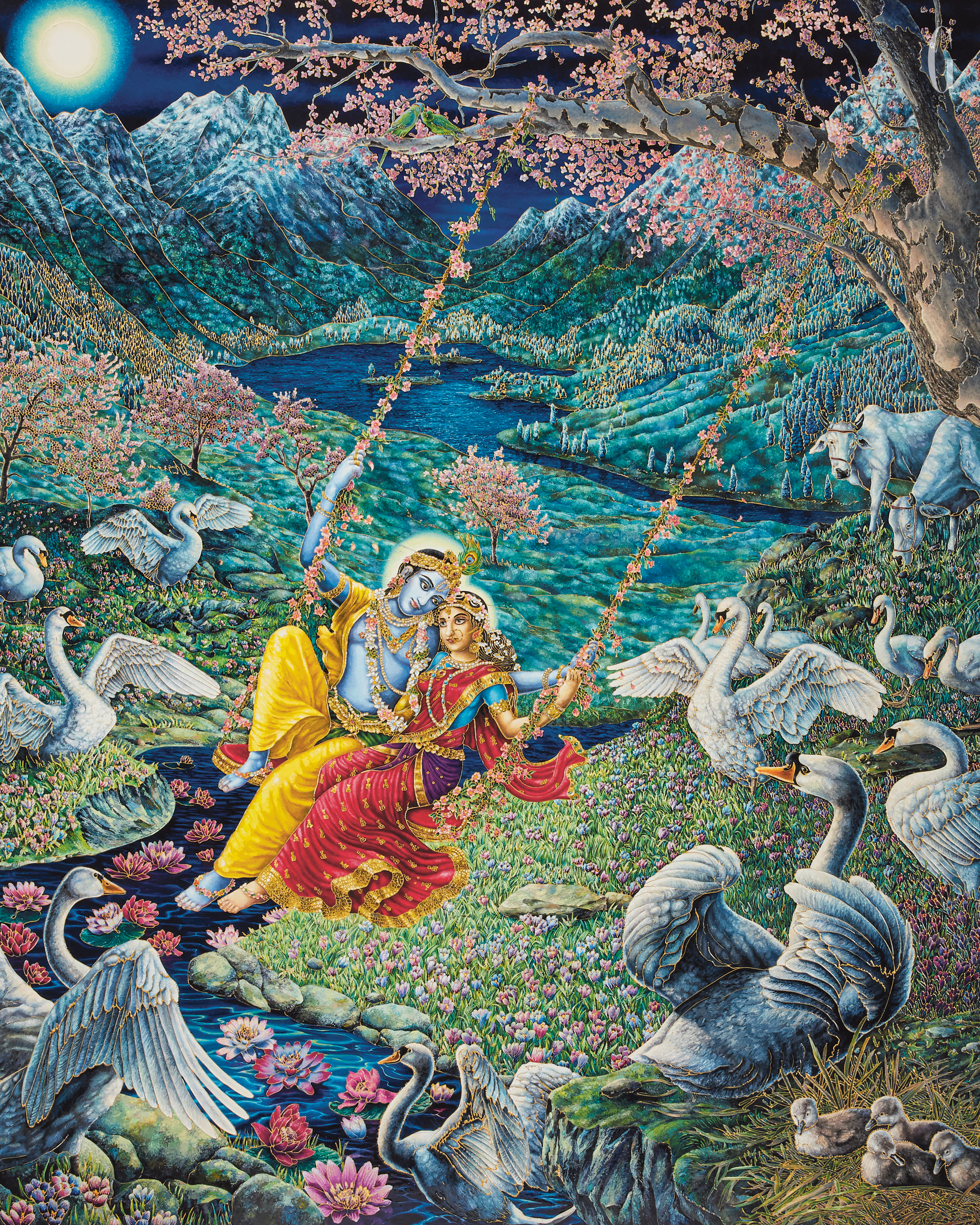
All the NMACC co-conspirators are united in their motivation and their dreams for the legacy of their work here. As Ranjit articulates, “It’s vital that it marks a shift in the cultural ecology of the city. All of us really hope that it’s going to be a centre that attracts new audiences, new viewerships, and really nurtures a new culture around the arts.”
And for the respected theorist, the NMACC also has a transformative part to play in informing civic pride and national identity. “Cultural expression is not just about producing artefacts or staging productions that people consume then go away. It’s a very necessary condition of freedom,” he stresses. “That’s the potential of this institution: you’re far from just becoming passive consumers of culture. I think people who participate in this institution will also find themselves strengthened as citizens.”
With every emerging creative city increasing its eff orts to be considered as the next credible contributor to global conversation, Jeffrey Deitch understands the trajectory of an aspiring cultural capital better than most. Does Mumbai have what it takes? “Culture is now a big industry,” he accepts. “In earlier decades, economic strength came from steel plants, mining and that’s still important, but today we see the power of the culture industry. For Mumbai, Dubai, and other cities to emphasise museums, musical facilities, and education, that’s powerful economically, as well as something that just enhances life.”
What qualifies a city to be considered the next New York, London, or Paris? According to Jeffrey Deitch, “In my opinion, you have to have something authentic there. So, cities such as Singapore and Dubai can become quite powerful culturally, but you need for it to be genuine. You need a lot of ingredients of very vital local culture that’s been there for a long time.”
That’s not all. It’s also a matter of geography. He continues, “Almost all of the cities that become dynamic art centres are port cities in some way, whether they’re on the ocean, like New York or Paris, and today, Dubai, which is an airport city. The strong cultural centres are international cities. They’re multicultural cities as Los Angeles is today. Mumbai is an example where people are coming from many different cultural traditions in India, and converging in the city. Even though it’s primarily Indian, it is also a multicultural city that has that kind of diversity. And what we’re doing with the show is opening up Mumbai to international artists – a number of the artists who came here for the opening are going to want to come back, they’re going to want to do shows, and that’s an important part of the process, too.”
The symbolism and the intention is clear. India has reached an inflection point – done with its colonial past and eager to embrace its main character energy, and step into its power on its own terms. Nita Mukesh Ambani herself couldn’t agree more. “It’s an auspicious time to begin a glorious new chapter for a proud, prosperous, strong, and self-confident nation,” she reflects. The celebrations may have started with a takeover by a French luxury brand at the Gateway of India – a monument built to honour King-Emperor George V as the first British monarch to visit the nation in 1911 – but ended with the NMACC laying the foundations of an exciting future for the arts, for culture, and for India.



